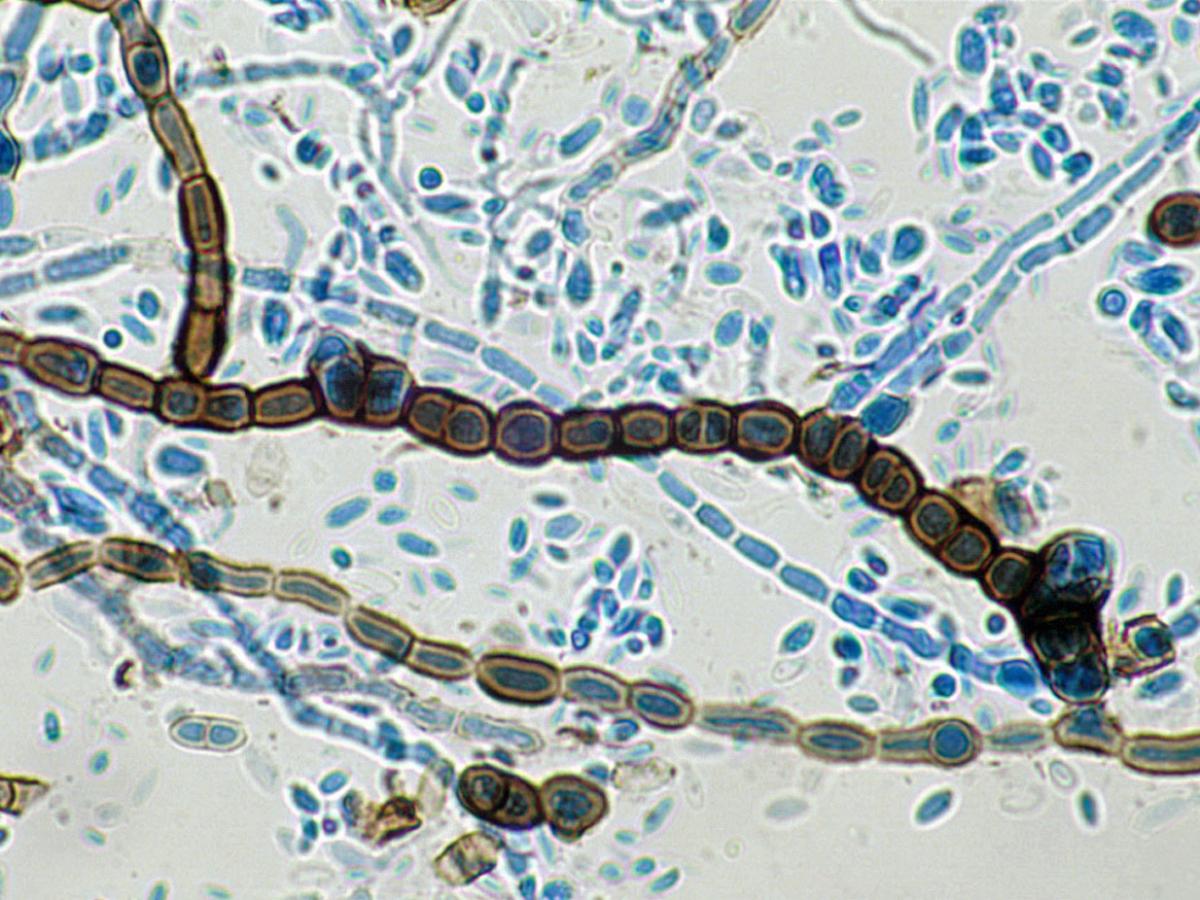Aureobasidium pullulans
Aureobasidium pullulans has a worldwide distribution and is usually isolated as a saprophyte, occasionally from skin and nails. It has also been reported as a rare causative agent of phaeohyphomycosis, mycotic keratitis and peritonitis in patients on continuous ambulatory peritoneal dialysis (CAPD).

Aureobasidium pullulans culture showing black slimy masses of conidia.
RG-1 organism.
Morphological description:
Colonies are fast growing, smooth, soon covered with slimy masses of conidia, cream or pink, later becoming brown or black. Hyphae are hyaline and septate, frequently becoming dark-brown with age and forming chains of one to two-celled, thick-walled, darkly pigmented arthroconidia. These arthroconidia actually represent the Scytalidium anamorph of Aureobasidium and are only of secondary importance in recognising members of this genus. Conidia are produced synchronously in dense groups from indistinct scars or from short denticles on undifferentiated, hyaline to subhyaline hyphae. Conidia are hyaline, smooth-walled, single-celled, ellipsoidal but of variable shape and size (8-12 x 4-6 µm), often with an indistinct hilum (i.e. a mark or scar at the point of attachment). Temperature: optimum 25C; maximum 35-37C.

Aureobasidium pullulans showing one to two-celled, darkly pigmented arthroconidia and hyaline, single-celled, ovoid-shaped conidia which are produced on short denticles.
Molecular identification:
Recommended barcoding genes are ITS, EF-1α and D1/D2 (de Hoog et al. 2015).
Key features:
Hyphomycete (so-called black yeast) producing hyaline blastoconidia simultaneously from the vegetative hyphae, which may also form chains of darkly pigmented, thick-walled arthroconidia.
| No | <0.03 | 0.06 | 0.125 | 0.25 | 0.5 | 1 | 2 | 4 | 8 | ≥16 | |
|---|---|---|---|---|---|---|---|---|---|---|---|
| AmB | 15 | 1 | 6 | 4 | 4 | ||||||
| ISAV | 6 | 3 | 2 | 1 | |||||||
| VORI | 15 | 2 | 6 | 6 | 1 | ||||||
| POSA | 14 | 3 | 8 | 3 | |||||||
| ITRA | 15 | 3 | 9 | 3 |
References:
Hermanides-Nijhof (1977), Domsch et al. (2007), McGinnis (1980), de Hoog et al. (2000, 2015), Najafzadeh et al. (2014).
